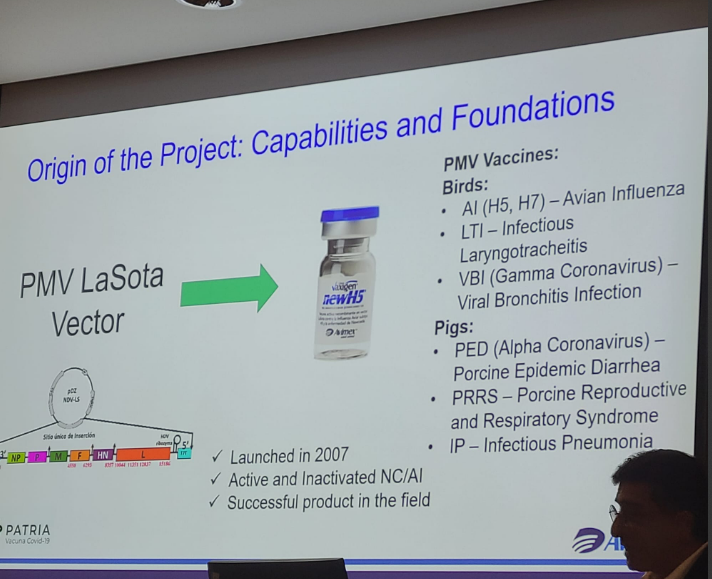In the race to combat COVID-19, Mexico emerged with a groundbreaking achievement: the AVX/COVID-12 vaccine, dubbed “Patria” (Motherland). This milestone was not just a scientific victory but a testament to the power of collaboration across public, private, and international sectors. Drawing from a recent LinkedIn presentation by CARE-IPD and insights from clinical trials, regulatory milestones, and global research, here’s the story of how Mexico turned innovation into impact.
The Genesis: A Public-Private-Academic Powerhouse
The Patria vaccine was born from an unprecedented alliance. Led by Avimex—a Mexican company with decades of expertise in veterinary vaccines—the project united the Mexican Social Security Institute (IMSS), the National Council of Science and Technology (CONACYT), the Icahn School of Medicine at Mount Sinai, and Mexico’s federal government 511. This coalition leveraged Avimex’s PMV LaSota Vector, a Newcastle Disease Virus (NDV) platform honed since 2007 for avian and porcine vaccines 59. By 2020, this veterinary-proven technology was repurposed to target SARS-CoV-2’s spike protein, stabilized in a HexaPro prefusion conformation for enhanced immunogenicity 39.
Why Patria Stood Out: Five Strategic Advantages
- Flexible Administration: Patria’s intranasal and intramuscular routes offered dual pathways to immunity, with the former showing promise for mucosal protection—a critical gap in traditional vaccines 410.
- Safety & Immunogenicity: Preclinical trials in pigs, hamsters, and mice revealed no adverse effects, while Phase I human trials confirmed its safety and robust antibody response 59.
- Adjuvant Potential: The vaccine induced interferons (α, β, γ), amplifying immune activation 3.
- Low Interference: No pre-existing NDV antibodies in humans ensured unhindered efficacy 5.
- Cost-Effective Production: Grown in embryonated eggs—like flu vaccines—it promised scalability for low-resource settings 29.
The Five Pillars of Development
- Scientific Rigor: From molecular design to formulation, the project prioritized cutting-edge virology 5.
- Clinical Roadmap: Phases I-III focused on safety (91 volunteers), immunogenicity (158 participants), and efficacy (3,120 people), with Phase IV pharmacovigilance already approved by COFEPRIS, Mexico’s health regulator 511.
- Industrial Scalability: Avimex’s GMP-certified facilities ensured mass production met global standards 511.
- Regulatory Alignment: COFEPRIS fast-tracked approvals, though evolving international guidelines later posed challenges 511.
- Funding & Diplomacy: Backed by CONACYT and AMEXCID, the project also strengthened Mexico’s bid for “vaccine sovereignty” amid global supply inequities 111.
Trials, Triumphs, and Hurdles
Clinical Success:
- Phase I trials (2021) showed Patria was safe, with mild side effects like fatigue and headache 9.
- Phase II (2024) demonstrated 2.5-fold increases in neutralizing antibodies against ancestral and variant strains (Alpha, Delta, Omicron) 4.
- Phase III confirmed non-inferiority to AstraZeneca’s ChAdOx1-S, with post-booster immunity 1.2–3x stronger than natural infection 5.
Challenges Faced:
- Regulatory Complexity: Stricter global standards post-2023 delayed GMP approvals 5.
- Variant Adaptation: Lack of standardized protocols for Omicron subvariants (e.g., JN.1, KP.2) under BSL-3 conditions slowed testing 35.
- Public Hesitancy: Mexico’s lagging booster uptake—partly due to outdated Cuban Abdala doses—highlighted the need for clear communication 111.
Collaboration: The Heart of Innovation
The Patria project’s success hinged on a vast network:
- Local Institutions: IMSS, INER, and BIRMEX ensured clinical and industrial execution.
- Global Partners: Mount Sinai contributed NDV engineering expertise, while CastleVax (a Mount Sinai spin-off) supported intranasal booster trials 10.
- Government Backing: CONACYT and COFEPRIS bridged funding and regulatory gaps 511.
This “open innovation” model, as highlighted in CARE-IPD’s presentation, underscores how multidisciplinary collaboration can turn national ambition into global health solutions.
Legacy and Looking Ahead
Though Patria arrived two years after global frontrunners, its impact is profound. It shielded Mexico during Omicron waves, reduced dependency on imports, and showcased LMICs’ capacity for self-reliance 111. Future iterations aim to target newer variants, with preclinical studies already showing cross-reactive immunity against XBB.1.5 and JN.1 3.
Final ThoughtsThe Patria vaccine is more than a medical breakthrough—it’s a symbol of resilience. In a world grappling with inequity, Mexico’s journey reminds us that local expertise, when amplified by collaboration, can transcend borders. As Dr. Fidel Alejandro Sánchez noted, the road wasn’t without skepticism 1, but the outcome speaks volumes.
For deeper insights, explore CARE-IPD’s full presentation here.
What’s your take on collaborative vaccine development? Share your thoughts below!
References: Insights sourced from clinical trials, regulatory reports, and global research [citations:1-8].



